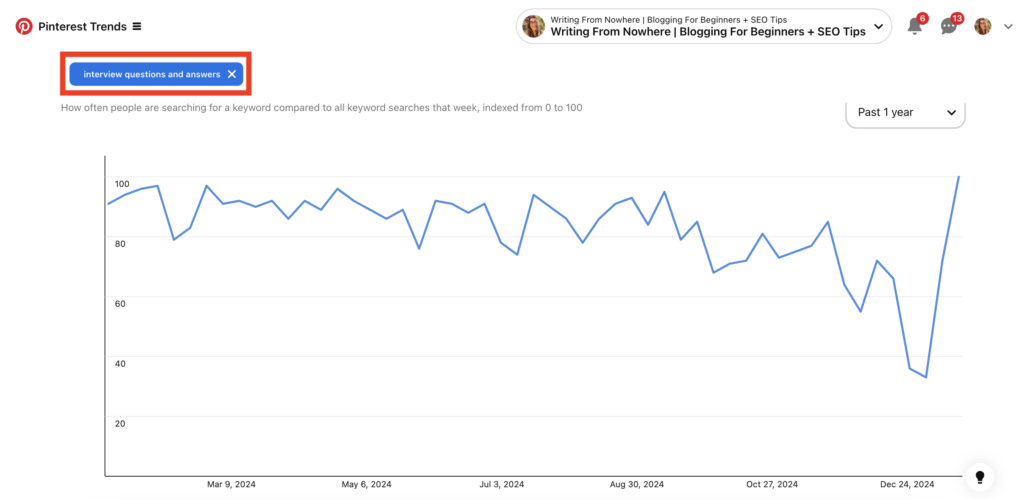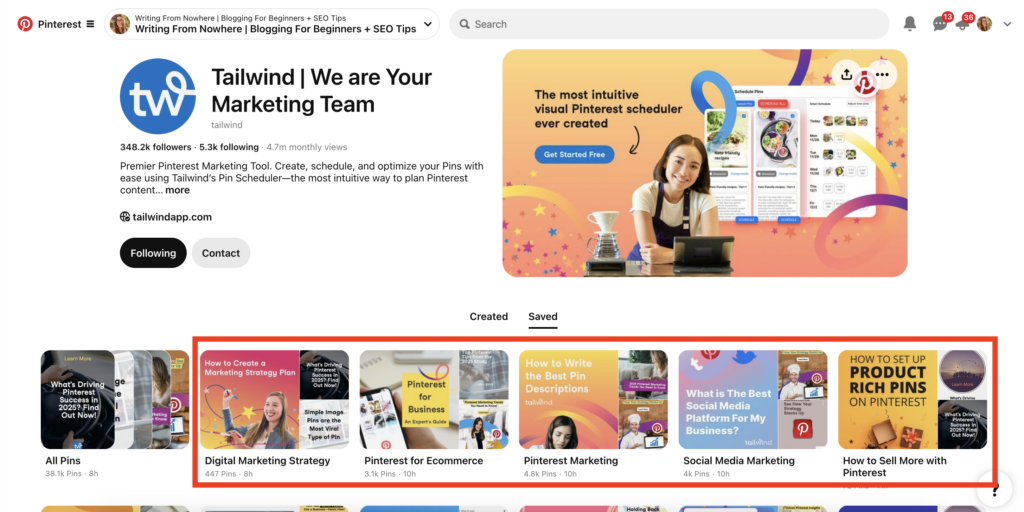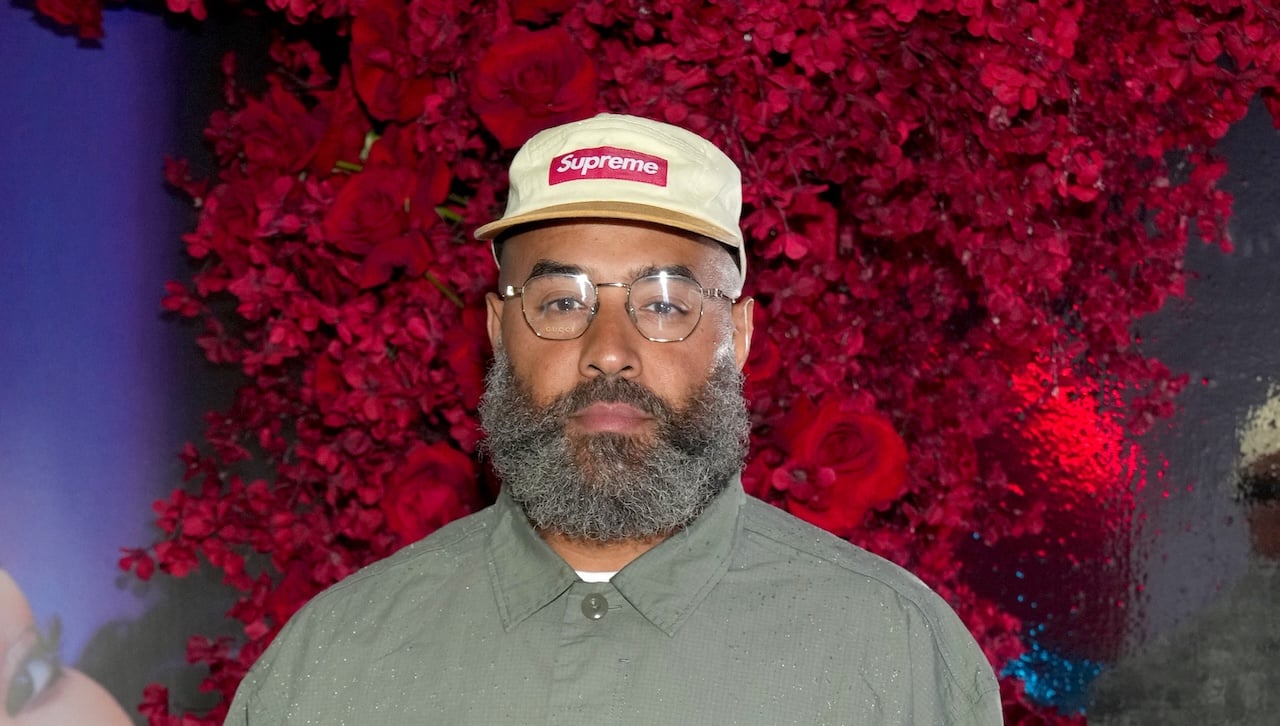The threatened TikTok ban left businesses scouring the Internet for a replacement at the start of 2025. Suddenly, platforms like RedNote, Lemon8 and Triller, which have been described as having “a similar functionality to Instagram and Pinterest,” gained recognition as TikTok alternatives.
But why not consider Pinterest itself?
Here’s how to know if you should invest in Pinterest for your business’s content strategy.

What does Pinterest have that other platforms don’t?
Though it’s a 15-year-old platform, Pinterest is still widely misunderstood. This tech giant is often mislabeled as a social media platform when, in reality, it’s a visual search engine with the scrolling appeal of a social site.
Brands that successfully leverage Pinterest for their content experience three big payoffs:
- Content lifespan: Pins circulate for years—not just hours, days or weeks.
- Search: Virality exists, but the real return on investment comes from users seeking out your content and discovering it in search.
- Retrievability: Have you ever tried to find a LinkedIn post or Instagram reel that you saved a year ago? It’s possible, but not practical. However, Pinterest was designed to make content easy to revisit for years to come.
These differentiators set Pinterest apart—but the platform also aligns with TikTok in several key ways.
Pinterest’s overlap with TikTok
The platforms’ identical video dimensions make publishing TikTok videos on Pinterest sound like a no-brainer. And in some ways, that’s true.
Like TikTok’s audience, Pinterest’s audience is young (42% are members of Gen Z) and poised for retail. Pinterest reportedly reaches 40% of U.S. households with an annual income exceeding $150,000. To capitalize on these stats, Pinterest has its own dedicated retail program called the Verified Merchant Program.
The sea of opportunity is deep, but unfortunately, not all content can successfully translate from one platform to the other.
Can your TikTok content thrive on Pinterest?
TikTok videos were suddenly everywhere after the platform’s U.S. emergence, often to the point of frustration. As a result, many Pinterest marketers were asking the same question: If people wanted to watch TikTok videos, wouldn’t they just open TikTok?
While videos are encouraged on Pinterest, not just any video will be successful on the platform. TikTok content has the potential to translate to Pinterest if it meets these four criteria:
1. Avoids audio reliance
Audio is in TikTok’s DNA, but not Pinterest’s. Expect pinners to scroll with their volume off. Video pins also can’t use audio that you don’t own, such as trending sounds and copyrighted music.
2. Answers questions
Comedy skits or thoughtful musings, while entertaining and wildly popular on TikTok, won’t necessarily rank in high-volume searches. Pinners don’t open Pinterest for entertainment—they use it to find specific ideas.
Examples of content that answers questions are videos explaining how to remove stains from couch cushions or interview questions and answers (the latter of which has been trending recently).

3. Has visual context
Pinterest videos need context to make them understandable at a glance. For example, if you do a search on Pinterest for protein powder, you’ll see containers of protein powder and cooking images. However, the same search on TikTok produces videos of creators talking about protein powders. This is a fundamental distinction between the two platforms.
“Every month, 518 million people turn to the platform to discover new ideas that are right for them,” shared Nick Pigott, a member of Pinterest’s brand and creative solutions team, in a Pinterest Academy webinar. “They’re not here to passively scroll. They’re here with purpose: to plan and find inspiration and ideas to live their best life.”
4. Funnels to your website
Every Pinterest account is entitled to display a website on each piece of content it produces, not just on its profile. Pinterest pins are powerful traffic generators—and this is the prize that’s attracted brands to Pinterest for years.
Creators aren’t required to have a website to publish pins, but it’s the most powerful way to use the platform. To leverage this feature, you must have more URLs to use than just your homepage. You can then create pins for unique URLs on your website, such as products, landing pages and blog posts.
If these four criteria apply to your brand, it’s time to consider Pinterest as a marketing channel.
How to join Pinterest
Begin by creating a business account. Use your brand name as your username and verify your email. Then, add a profile photo and cover. Pinterest recommends a profile cover size that’s 800 by 450 pixels wide.
Next, claim your website to prove ownership of the domain. Many businesses skip this step, and it’s costly—your content won’t receive the same distribution otherwise. Once eligible, e-commerce brands can also apply for the Verified Merchant Program.
Account optimization
After you complete these steps, it’s time to optimize your account.
Pinterest’s algorithm wants to understand what your account and content focus on, and keywords are the backbone of this optimization process. To accomplish this, add relevant keywords naturally in the “About” section of your account.
Keywords are also used to optimize boards, so you should include keywords organically in board names and descriptions. Here’s an example from Pinterest marketing company Tailwind—notice that all the board names have keywords related to their content.

All your pins will be saved to one of your boards. Start by creating five to seven highly relevant boards and add new ones as you scale.
Publishing TikTok videos on Pinterest
Before publishing a TikTok video on Pinterest, be sure to remove the TikTok watermark. Then, start publishing slowly. Immediately publishing lots of content can register as a suspicious spike in activity, which can land you in “Pinterest jail” or even get your account suspended.
Choose a sustainable publishing schedule, such as one video per day. You can publish pins on mobile or desktop—but no matter where you publish, be sure to add keywords in the pin’s title, description and tags.

Maximizing Pinterest for a diversified content strategy
The looming threat of a TikTok ban has made brands seek diversified marketing. But there may yet be a silver lining: Repurposed content from TikTok can continue driving ROI on other social media platforms and search engines.
Just remember to be smart with the way you publish TikTok videos on Pinterest. A long-term payoff only comes to those who use the platform properly.
Photo by photobyphotoboy/Shutterstock.com




